

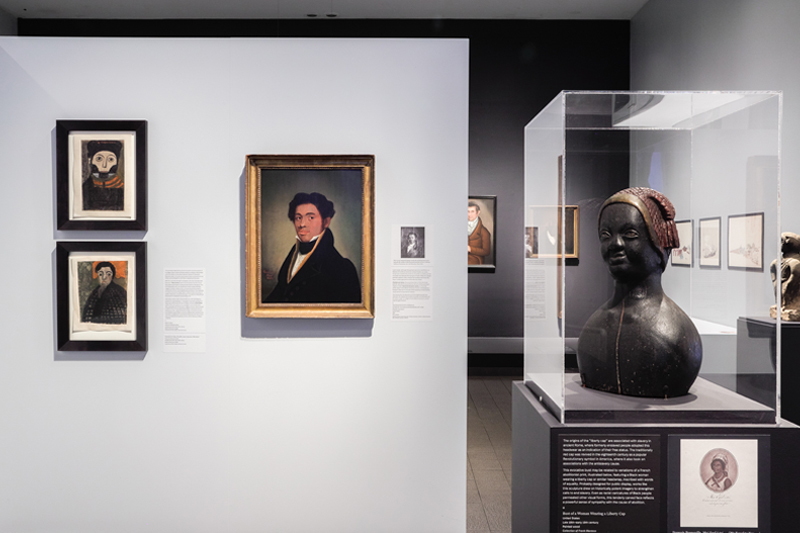
Uncovering Unnamed Figures
Photos by Eva Cruz/Every Story February 06, 2024
UD doctoral student curates art exhibit highlighting lives of Black Americans in the Northeast
Art, art history and cultural dimensions of American art have been University of Delaware doctoral student Emelie Gevalt’s passion for a long time. As the Curatorial Chair for Collections and Curator of Folk Art at the American Folk Art Museum (AFAM) in New York City since 2019, she found herself in the right place at the right time to curate an exhibit that is garnering positive attention for its exploration of a subject that has been largely unexamined in the art world — Black representation in the U.S. Northeast.
Unnamed Figures: Black Presence and Absence in the Early American North, which was three years in the making, includes 125 paintings, drawings, photographs, needlework and pottery by Black artists from the late 1700s and 1800s. The collection highlights the presence — and absence — of Black individuals at the time and was inspired, in part, by a class Gevalt took at UD.
Gevalt joined AFAM after receiving her master’s degree from UD’s Winterthur American Material Culture program (WPAMC), offered in conjunction with Winterthur Museum, Garden and Library. Once there, she questioned the representation, and lack thereof, of Black individuals in the art of the era and raised the idea of an exhibit that would explore the seeming “erasure” of Black individuals and the role of slavery in the north.
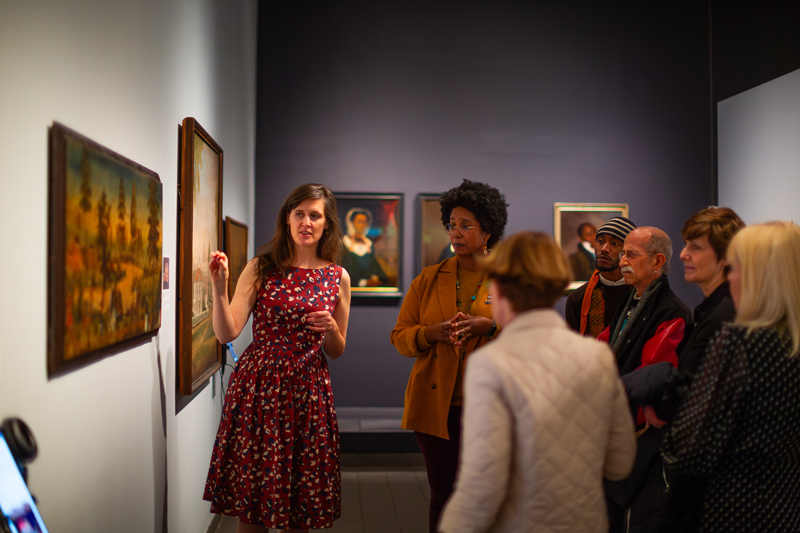
“There is still a misunderstanding of the history of slavery in the Northeast,” she said. “Connecticut didn’t even outlaw slavery until 1848, for example. Even though historians have done a lot of work on this, the mythology still exists. Slavery [in the Northeast] was prevalent and was not benign. Our hope is that by harnessing the power of the images, this understanding of the realities of this history will become clear to our visitors and they will share [their new knowledge] with others.”
Beginning a search for answers
Gevalt, who is a student in UD’s Art History Curatorial Track program, co-curated Unnamed Figures with RL Watson, an assistant professor at Lake Forest College, and Sadé Ayorinde, a predoctoral fellow at the Smithsonian Museum. They and other scholars contributed to the show’s catalog, which includes an essay written by Gevalt’s dissertation adviser, Jennifer Van Horn, associate professor of art and art history at UD.
When they began their work in 2020, Gevalt worried there wouldn’t be enough artifacts to fill an exhibit space. She needn’t have been concerned.
“We cast a wider net to bring in objects not always positioned as works of art, such as stoneware, dolls and needlework, and it was exciting to see the wealth of material out there, especially when you ask questions about absence,” she said.
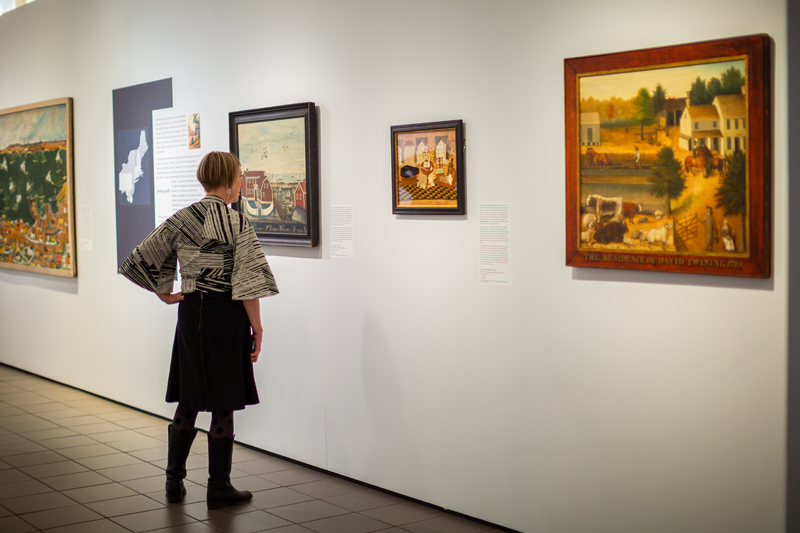
The curators easily found portraits of white families including Black attendants but had to dig deeper to find representations of Black residents where it might not be expected.
“We found an unpopulated landscape from Connecticut demonstrating the wealth and power of the white family who built the home in the painting,” Gevalt said. “The default is to think only of the wealthy white family, but after our research, you find all the Black families who used the street to get to a local shop and recognize they contributed to the agricultural labor; you look past the original intentions of that type of representation to probe deeper and to ask how these implicit stories can be brought into the center through examination.”
One of the exhibition’s highlights, and an example of the growing Black middle class, are portraits of William and Nancy Lawson painted in 1843 by William Matthew Prior. As an example of his subtle symbolism, Nancy Lawson is holding a book and marking the page with a finger, indicating that she was literate.
Some of the exhibit’s needlework includes the makers’ names signed in thread, thereby identifying themselves, including a sampler embroidered by Sarah Ann Major Harris around 1826, spelling out her family’s genealogy.
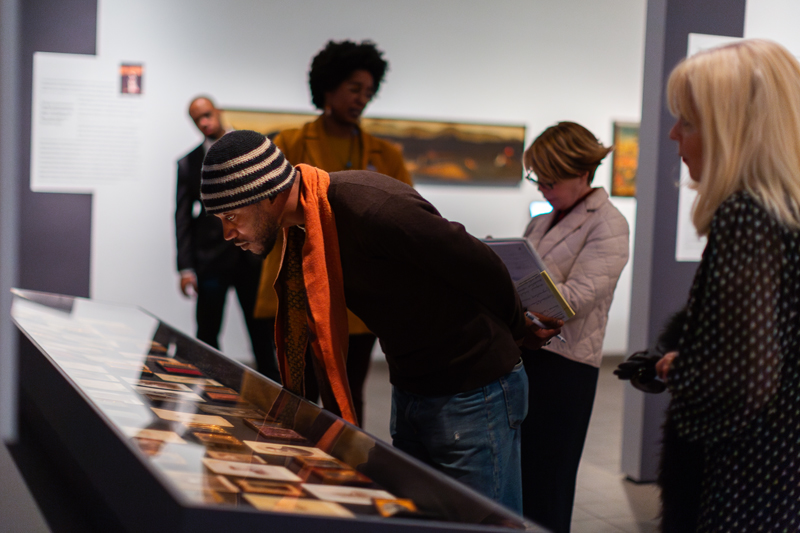
Birth of an idea
The exhibit’s genesis, in part, came from a graduate seminar Gevalt took in 2017 with Van Horn, which examined the ways material and visual culture related to enslavement in the United States in the 18th and 19th centuries.
“It was a great opportunity to work with the objects at Winterthur and think about enslaved makers, the way they used objects, their personal and group identities, and the many ways enslavement and material culture went together,” Van Horn said.
The seminar culminated with the “Truth of the Trade” exhibit at Winterthur, which explored these connections. Gevalt’s contribution was an examination of the painting “Perry Hall,” which depicted the plantation home of Harry Dorsey Gough, north of Baltimore, Maryland. An unknown young Black nursemaid was pictured in the painting, near members of the white family. Paintings of Perry Hall form the cornerstone of the exhibit.
“Emelie made the object come alive. I encouraged her to do more with it, and she liked the idea, but wasn’t sure of what direction to take. The job at AFAM helped pull the pieces together, and the seed was planted at Winterthur,” Van Horn said. “As an instructor, it’s a dream to have students take a class project and have it become something with such wonderful reach and make great contributions. UD’s connection to Winterthur is a wonderful example of the University’s longstanding tradition of empowering students to do meaningful work that changes the community and region for the better.”
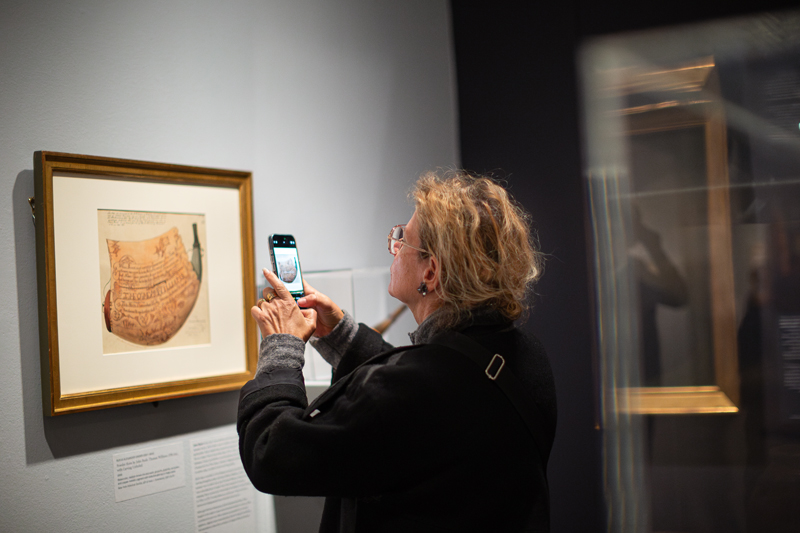
Contact Us
Have a UDaily story idea?
Contact us at ocm@udel.edu
Members of the press
Contact us at 302-831-NEWS or visit the Media Relations website

